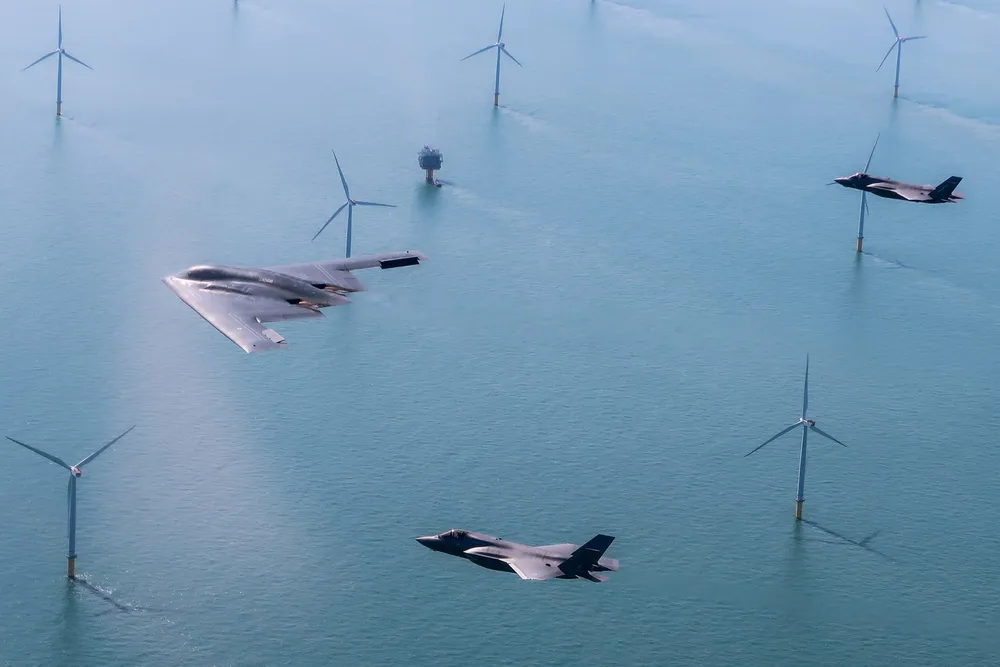'Unacceptable': BP bristles at BAE Systems wind farm radar shutdown demand
The wind and defence sectors regularly butt heads over the interference that turbines cause radar systems

BP and EnBW have pushed back on an “unacceptable” demand from BAE Systems that could see a major UK offshore wind farm they are developing shut down for indefinite periods to avoid interference with radar systems.
Interference that offshore wind farms cause radar systems is an area of increasing concern and friction as more and more gigascale projects are planned for increasingly crowded coastal waters.
BP and EnBW are currently developing two such projects – the twin 1.5GW Mona and Morgan arrays – in the Irish Sea, with both arrays currently before UK planning authorities considering their applications for development consent orders (DCO).
The projects have caught the attention of aerospace giant BAE, which has been in the process of developing a new surveillance radar system at its nearby Warton Aerodrome.
BAE has intervened in the planning proceedings for the wind farms – as the UK Ministry of Defence routinely does for its own installations – seeking assurances that any potential impacts the offshore arrays could have will be mitigated.
Why do wind turbines affect radar systems?
Radar works by firing out radio waves that bounce back off objects, revealing their position. Radar systems can filter out static objects like buildings that cause interference – but moving turbine blades are much more difficult. The interference and false returns the blades cause makes it harder for militaries to detect a hypothetical Russian fighter jet, or missile.
In a May submission, BP and EnBW said they are content with proposed wording in the DCO that no turbine at Mona can start spinning until energy secretary Ed Miliband confirms that appropriate mitigation will be implemented for its impact on Warton’s radar systems.
BP and EnBW say this wording “unambiguously secures appropriate mitigation” for Warton Aerodrome regarding the effect Mona’s up to 96 turbines could have.
This wording is, they say, based on existing precedent accepted by the Defence Infrastructure Organisation (DIO) – an arm of the UK’s Ministry of Defence – for other offshore wind projects.
BAE has however sought to include another clause in the DCO, that in the event of any failure of the approved radar mitigation scheme for Mona, the wind farm must upon being notified “immediately cease to operate” until this is resolved.
No turbine would be allowed to restart until the wind farm operator has, at its sole cost, “undertaken the repairs and corrective measures required to reinstate” the radar mitigation scheme.
BP and EnBW counter that this proposed “‘shutdown’ obligation is unacceptable,” arguing it contradicts Civil Aviation Authority policy and precedent and could undermine grid stability by taking 1.5GW of generating capacity offline.
It would also present a “significant challenge” to taking a Final Investment Decision, say the developers, “as the potential loss of revenues for an indefinite period of time, would undermine investor confidence.”
Offtake arrangements would be impacted due to “increasing liabilities relating to compensation, and thus ultimately, delivery” of the Mona project.
BP and EnBW further said that including wind farm “shutdown” clauses is contrary to government policy, including its Clean Power 2030 Action Plan, “as shutdown provisions do not support delivery of affordable energy to consumers or the achievement of Net Zero, with offshore wind forming the backbone of electricity generation.”
BP and EnBW said that such a shutdown clause is not “justified or necessary” and would result in “unacceptable risk” for delivering Mona.